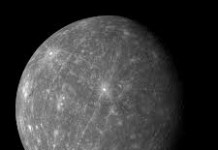When ancient navigators and wise men mapped the stars, they developed a chart of the positions of the celestial bodies at a given time. These were kept in printed tables and charts that paired the values together at regular intervals. Each of the bodies has their positions calculated by ascension and declination and an ephemeris will track eclipses, retrograde motion and planetary stations, planetary ingresses, sidereal time, nodes and phase of the moon, and the positions of minor celestial bodies such as the asteroids or moons. The ephemeris can be traced as far back as the first millennium where celestial movements were tracked by Babylonian astronomers, but they grew in popularity with the astrolabe in the 8th and 9th centuries. Because so much information is gathered with an ephemeris, some astrologers will use them to help identify the transitioning and degree of influence different planets have on a person’s birth sign.

How Ephemeris Calculation Works
Most ephemeris’ are calculated and printed by computers now, and learning how to read an ephemerides isn’t hard, but it does take practice. To begin with, you’ll want to spend time learning the different symbols that you’ll find. These will include the sun and moon, the lunar phases, lunar nodes and if you are using an astrological ephemeris you will also need to know the symbols for the different signs. Plus, you’ll also need to know the symbols for the different phases of the moon: new moon, full moon, and the two half moons.
Use GMT Time
Next, you need to keep in mind that all ephemerides are expressed in Greenwich Mean Time or GMT. This means that you need to know where your time zone falls in relations and add or subtract the appropriate number of hours. For example, if the ephemeris says that something happened at 12:00am or Midnight, and you are located in Los Angeles, you will subtract eight hours from the GMT time because Los Angeles is -8:00 GMT. Therefore, an activity that takes place at Midnight GMT took place at 2pm in Los Angeles.
Zodiac Positions
Look next at the signs of the zodiac. Their positions are listed by degree, minute and second if you are looking at the sun and moon. These measurements, however, are not measurements of time, but of space. These will be listed in decimal form though the moon is listed twice.
Planets in retrograde will have an R and planets that are Direct will have a D. The moon’s North and South nodes are always at the same degrees and minutes just opposite. Tracking the moon also provides Last Aspect and Ingress for the moon as well as the phases so you can see where they are applying the most influence on the zodiac signs. This is especially helpful as these are areas that can be easy to overlook and yet hold tremendous influence over a person.
If you are interested in vedic astrology there is even a section that helps with that called the SVP and it lists the Julian Day or the day number of days we have been in a new century.


















